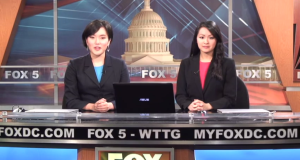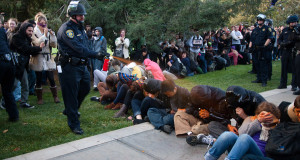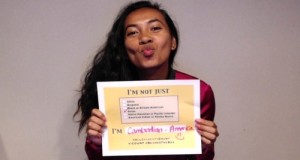There are more Asian Americans than ever represented in the films we watch, the music we listen to and the restaurants we frequent, but not in the politicians we elect. As a growing population, Asian Americans are becoming an increasingly defined — and coveted — voting demographic. Yet the population increase is not reflected in the voting booth: Only three out of 10 Asian Americans have voted in midterm elections since 1998, a much lower proportion than whites and blacks.
Of 9 million Asian American citizens, only 31 percent voted in the 2010 elections, according to a 2014 Pew Research Center report. This is comparable to the Hispanic voter turnout, at 31.2 percent, but much lower than blacks at 44 percent and whites at 49 percent.
Part of the problem is that few political campaigns target the Asian American population. In the 2012 presidential campaign, the Asian American vote was “basically ignored,” says Bobby Caina Calvan, a journalist who covered the election for the Boston Globe. “The spotlight was on the Latino vote.” Calvan mentioned potential impediments to voting, such as citizenship status and language barriers. These barriers exist for many Latinos as well, but there are significantly fewer Asian Americans in the United States than Latinos — about 18 million, compared with 52 million Latinos, as of 2012. Local political campaigns cater to pockets of Asian Americans across the country, but national political campaigns continue to focus largely on the Latino and African American vote.
Perhaps catching “Face the Nation” could spark interest in politics — if Asian American professionals had the time. In 2010, 37 percent of these voters said they were “too busy” or had a “conflicting work or school schedule” that kept them from voting. As much as the Asian American community prioritizes academic and financial achievement, this may inhibit the success of their political influence.
Census Bureau research shows that Americans with more wealth and education are more likely to vote in elections. The Asian American bloc presents an anomaly, with 40 percent of college-educated Asian Americans voting, compared with 64 percent of whites, 57 percent of blacks and 50 percent of Hispanics. Asian Americans tend to be more highly educated — among ethnic groups, they have the biggest proportion of degree-holders, at 47 percent — which should, hypothetically, translate into being active voters. But Asian Americans have yet to represent themselves proportionally at the polls.
The Pew report notes that immigrants comprise 74 percent of the adult Asian American population, perhaps affecting how involved these Asian Americans perceive themselves in American politics. However, native-born voters turn out at the same rate as immigrants — with a low 31 percent.
As a Chinese American who grew up in south Louisiana, Jimmy Tam says that the level of political participation reflects the nature of Asian American networks.
“Their communication is translated — many of them don’t speak English, so they’re getting second-hand information from Asian media or personal sources,” he said. He laughed, adding, “The news is really just gossip.”
Tam said that he saw his parents and other adults in the Asian American community “busy making a living,” so much so that they did not become involved in civic life. Tam also said that first-generation children are taught to “appreciate what [we] had,” causing them to avoid politically challenging societal structures they were determined to work within.
Tam, a landlord, said he was “too busy” to be involved in politics, his priority being property upkeep and dealing with tenants. In addition, he points out that many Asian Americans are first or second generation, meaning the ideas and lifestyles brought from home can be challenging to integrate into American political life. “Politics wouldn’t be a priority of mine if I just moved here,” he says.
Asian Americans and millennials may have the lowest voter turnouts in midterm elections, but some Asian American millennials would like to see this change. Vincent Nguyen, a 20-year-old Vietnamese American and Louisiana native, believes that being “too busy to vote” is “a cop-out for being an active American citizen.”
Nguyen sees voting as an agent for change, but in regards to young Asian American political power, he believes “there is none.” Both Asian American and millennial interests are severely underrepresented in elected office, which the Millennial Action Project (MAP) and Congressional Asian Pacific American Caucus (CAPAC) are working to counter. One of MAP’s co-founders, Rep. Tulsi Gabbard, D-Hawaii, is not only the youngest woman to serve in Congress but also the first Hindu and Samoan. Though Gabbard is making strides in representing young Asian Americans, she is one of 435 House members.
“How can you say that a person represents a group of people if they aren’t even seen as at least a peer amongst the majority of citizens, regardless of age?” he asks.
In his own experience, Nguyen says that Asian Americans in general don’t discuss politics.. During the recession, his dad lost his job and the family lacked medical and financial support. Though governmental policies directly influenced the family’s life, Nguyen said his parents were “relatively intrigued, but not informed.”
Intrigued could turn to informed with a political campaign striving to reach Asian Americans. In the 2012 presidential election, the Asian American vote helped settle the battles for Florida and Virginia, says Calvan. With that segment of voters growing, political campaigns will be pressed to reserve space in Asian American schedules.
Follow @AryannaPrasad on Twitter.
 VOICES Publishing from the AAJA National Convention
VOICES Publishing from the AAJA National Convention





